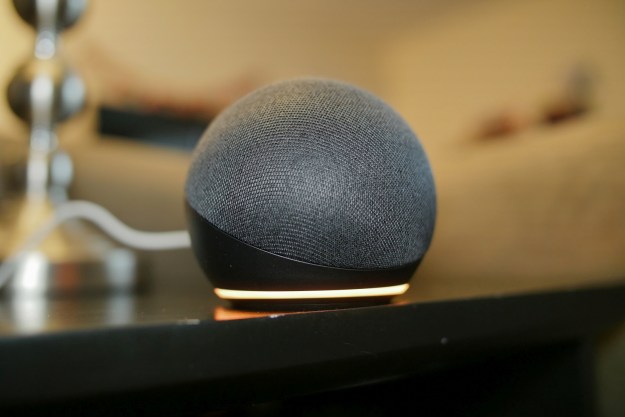Alexa, the voice inside your Amazon Echo or Dot, is very helpful and always accommodating. So are Siri, Cortana, and the various other artificially intelligent assistants available today. But none can seemingly compare with the experience provided by Azuma Hikari, the holographic character who lives inside the Gatebox, Japan’s sort-of-but-not-really answer to the Amazon Echo.
Instead of a simple, cylindrical speaker design, Gatebox has a screen and a projector, which brings Hikari — her name, appropriately, means “light” — to life inside the gadget. On the outside are microphones, cameras, and sensors to detect temperature and motion, so she can interact with you on a more personal level, rather than being a voice on your phone.
The result is a fully interactive virtual girl, who at her most basic can control your smart home equipment. The sensors mean she can recognize your face and your voice, and is designed to be a companion who can wake you up in the morning, fill you in on your day’s activities, remind you of things to remember, and even welcome you back when you return home from work. There’s Bluetooth and a permanent connection to the internet, and the Gatebox can be linked up to a TV using an HDMI connection.
Conversing in Japanese only, Hikari understands many things, but she is still learning and her language skills are growing. In time, she will be able to hold verbal conversations, but in the meantime you can communicate with her via messages in the controlling app throughout the day. The app is compatible with both Android and iOS.
More characters
Designed by Taro Minoboshi, who is known for working on Konami’s Love Plus dating sim game series, the Azuma Hikari character is 20 years-old, according to her own website, and enjoys watching anime and eating donuts, but isn’t a fan of insects. Her dream is to become a heroine for anyone working hard. Keeping people company, in any fashion at all, is where Hikari will be best put to work. A recent report showed at 32 percent, single-person households are the largest housing segment in Japan, so artificially intelligent characters like this can make sense.
There is only one character available with the Gatebox at the moment, but others are certain to come in the future. For example, Vinclu, the technology company behind the Gatebox, demonstrated a version with Vocaloid virtual singer Hatsune Miku as the main character recently. Elsewhere, popular anime characters have been brought to life as virtual assistants already, such as Yuuki Asuna from Sword Art Online, in the Sony Music-produced Wake Me Up Asuna app. Similar partnerships with Vinclu and the Gatebox, whether it’s with Hatsune Miku or otherwise, seem almost inevitable if the product is a success.
The Gatebox can be pre-ordered at the moment, and will work in the U.S., but the first production run is limited to 300 units that cost around $2,600 each. We don’t expect supplies to last long though, even at this price. Before you rush off to get one, remember Hikari can only speak Japanese at the moment.
Editors' Recommendations
- What to do if your Amazon Alexa app is not working
- What is the Amazon Echo Hub?
- The best Alexa skills to use on your Amazon Echo in 2023
- Amazon’s Echo family expands with an on-wall hub, smart glasses, and more
- What is Amazon Alexa, and what can it do?






